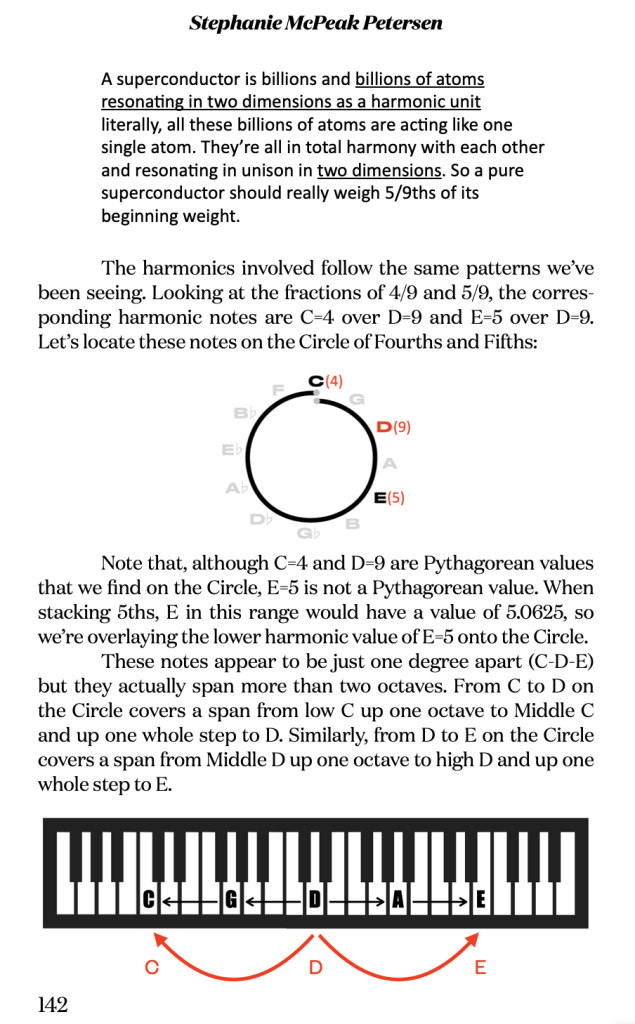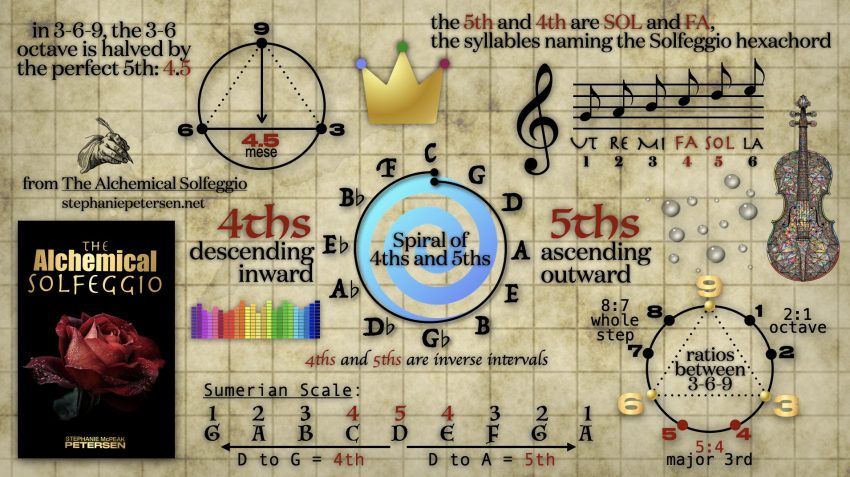One finding in The Alchemical Solfeggio is the repetitive recurrence of 4s and 5s.
The central idea here is that the Circle of 5ths is really a spiral of ascending 5ths and descending 4ths. From this foundation, a new 9-centered reality is built in parallel to that of the octave of 3 and 6. This is the foundation the Sumerians built from with their D-centered scale, moving out and back in 4th and 5th intervals. Note that D is the 9th harmonic, and focusing on a central (mesonic) D tonic is not simply moving up one whole step from a C-based scale. The note of C is the 1st harmonic, so a move from C to D is a whole world away.
This is relevant to the findings of David Hudson with regard to the platinum group metals and “orbitally rearranged monatomic elements.” I go into more detail in the book, but if you’re familiar with Hudson’s work, he accidentally processed out a 4/9ths loss of the mass of his material. That means 5/9ths was retained until the sample cooled and returned to its original weight. Again, a 4 and a 5 with respect to a 9. Following is page 142 of The Alchemical Solfeggio:

Intervals between the notes of C and D can certainly be deceptive. Is it a whole step? Is it a 9th? My first ah-ha moment regarding musical ratios came suddenly when I realized that the relationship of D to C was as the 9th note off the tonic down to the 8th or octave. And that is the exact ratio of the whole step they express: 9:8.
In the book, though, I discovered a whole step ratio (8:7) of a very different nature, an interval Ptolemy included in his “soft” diatonic tetrachord. Just one difference of this whole step ratio, which is really just the tip of its iceberg, is that it represents the 5 and 4, the 5th and 4th, because in the harmonic series, the 8:7 septimal whole step is expressed by both C (Harmonic 8) to Bb (Harmonic 7) and G (Harmonic 24) to F (Harmonic 21), as 24:21 reduces to 8:7. And G and F are the SOL and FA off C, the 5th and 4th.
This was a pretty fun book to write.

